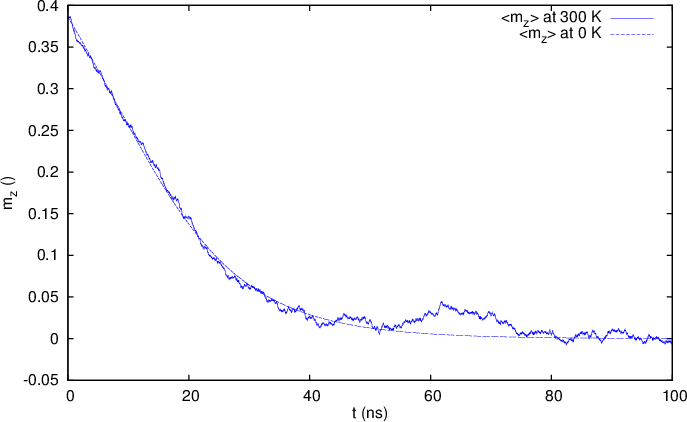Seventh example: Temperature
In this example 10 particles are initialised with a random magnetisation. They have a negative anisotropy constant along the z-axis, which means that the magnetisation prefers to lie in the xy-plane. This relaxation is shown at a zero and nonzero temperature.
package main
import (
. "github.com/JLeliaert/vinamax"
)
func main() {
//Defines the world at location 0,0,0 and with a side of 1e-6 m
World(0,0,0,1e-6)
//Adds a cube to the word with side 1e-6 m
test := Cube{S:1e-6}
//Adds 10 particles to the cube
test.Addparticles(10)
//the particle have radius 20 nm
Particle_radius(20e-9)
//Don't calculate the demagnetizing field
Demag=false
//saturation magnetisation in A/m
Msat (860e3)
//timestep : 0.1ps
Dt = 1e-13
//initialise time at zero
T = 0.
//temperature=300 K
Temp = 300.0
Setrandomseed(3)
//Gilbert damping constant=0.02
Alpha = 0.02
//anisotropy constant=-10 000 J/m**3
Ku1 = -10000
//anisotropy axis along the z-direction
Anisotropy_axis(0,0,1)
//initialise the magnetisation along the y direction
M_random()
//write output every 4e-12s
Output(4e-12)
//run for 100 ns
Run(100.e-9)
}
The results of the simulation are visualised below, and the effects of a nonzero temperature can clearly be seen.

The output of the seventh example plotted with GNUPLOT